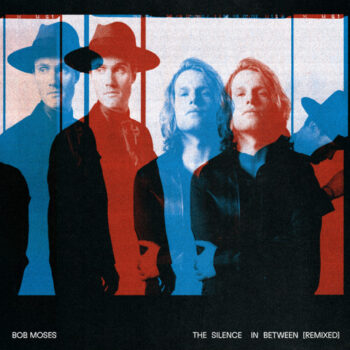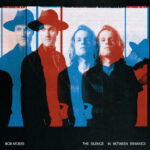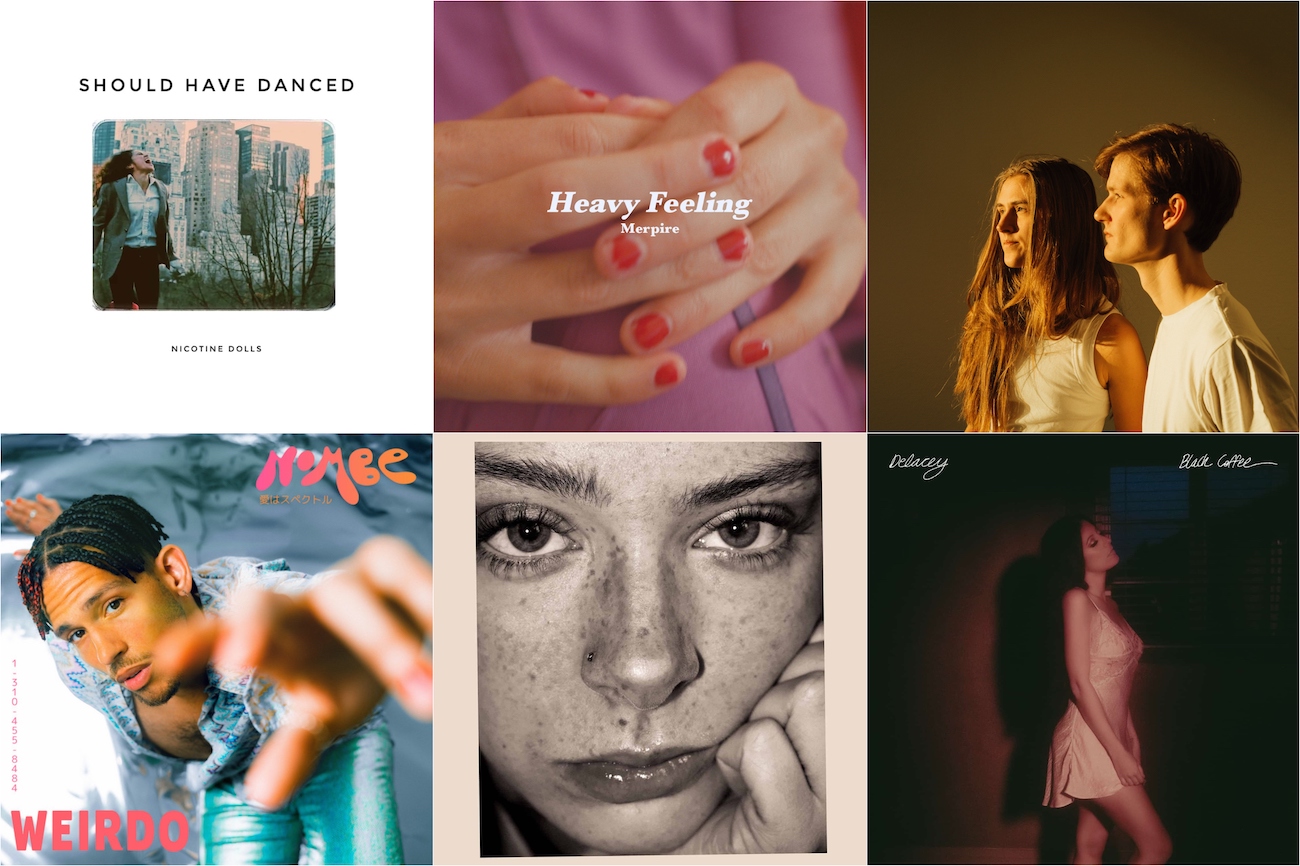Bob Moses, the electronic duo of Jimmy Vallance and Tom Howie, sit down with Atwood to discuss broken beliefs, finding inspiration, and their recently released EP, ‘The Silence in Between (Remixed).’
Stream: “The Silence in Between (Remixed)” – Bob Moses
Silence is our canvas. There’s nothing and then all of a sudden you create music and put a statement into the world that never existed before.
What can you believe in?
It seems an increasingly difficult question to answer as we grow more online and isolated in our versions of the truth. Our bubbles have become perpetually noisy spaces where stimulation is constant, and the algorithm funnels us ever closer to a fixed worldview. To break the cycle, what we often need is silence.

For Jimmy Vallance and Tom Howie, better known to the world as the chart-topping alt-dance partnership of Bob Moses, silence became a dowsing rod pointing a path through the clatter. While the world shuttered, they took a moment to soak it in, that space of unknowing like a held breath before the next moment comes.
“Silence can be uncomfortable,” admits Vallance. “It makes you stop and battle your own thoughts and yourself. It forces you to learn how to cope.” Silence brings a chance to learn, to cut away from the ambient psychic unrest that keeps us moving ever toward our personal singularities. But silence rarely lasts forever.
The silence in between
Goes on and on
And you’re the one I need
‘Cause you make me believe
That quiet rift between where Bob Moses were and where they wanted to be is where The Silence in Between was born. The smash album gave us the #1 hit single “Love Brand New” alongside a slate of dark, yet optimistic mood pieces that stands as their most consistent release to date. “Silence is our canvas,” explains Howie. “There’s nothing and then all of a sudden you create music and put a statement into the world that never existed before.”
That statement is at once rich with the existential anxiety of living in “the end times” (although hasn’t each generation felt that it existed at the end of it all?) while finding meaning somewhere in the roiling chaos. Album opener “Seen It Coming” pulses like the arcing current of a severed wire, but its electricity powers a seedy, yet enticing club groove. “Time and Time Again” revels in connection through glittering trance. “Broken Belief” lands its industrial beat like a hammer into iron while mounting a sermon on the power of truth. It is optimism couched in the dark, deep house heartbeat that defines their best music.
Vallance expounds, “We’re not just talking about issues that are dark and depressing. Sure, we do that. But we always have a bit of hope, light at the end of the tunnel. We celebrate things like love and connection between people. I think that’s what makes art and music interesting.”
Recently, Bob Moses built on the story of “The Silence in Between” by releasing a remix EP featuring reimaginings of the album’s best moments by some of the duo’s favorite producers. Eagles & Butterflies and Vintage Culture both turn in propulsive renditions of “Love Brand New.” Kasablanca kick up the tension on “Afterglow,” and CRi lends his talent to a laidback spin of “Hanging On” that fans may recognize as the opener of Bob Moses’ recent DJ sets. On the topic of fielding these remixes, Howie explains, “It helps you to see your own process, melodies, and words in a new way. I think that whether consciously or subconsciously that always works its way into your future work.”
As the album and its remixes continue to make the rounds, Bob Moses are also gearing up for a summer tour of both live band and DJ sets. What started as the quiet anxiety of finding something to believe, has become a statement for all to hear. There doesn’t appear to be much silence in the world of Bob Moses anymore.
We had a chance to catch up with Howie and Vallance about the continuing story of The Silence in Between, painting with an aural brush, and finding optimism in the chaos. Read all about it below!
The creation of music is a place of solace and understanding.
— —
:: stream to The Silence in Between (Remixed) here ::
Stream: “The Silence In Between (Remixed)” – Bob Moses
A CONVERSATION WITH BOB MOSES

Atwood Magazine: You all said that The Silence in Between captures the ambient psychic unrest of the current moment. What does that mean to you?
Jimmy Vallance: We wrote the album during the pandemic, and funnily enough, we already work in cycles of touring and album writing. Literally, a week after we moved into our new studio in Los Angeles, the pandemic hit. So, the writing process pretty much began right at the very beginning of that, and through the course of writing the music for this record, we saw a lot craziness unfold in the world. People not knowing what to do and what to think. There was this sort of tension and anxiety of everyone being locked away, talking or fighting on the internet, getting their news from the internet, and not really communicating with one another. There was this tension and anxiety that was lingering in the air. Tom and I like to write about what we know, or what we experience. That’s what we were experiencing at the time and this album is a reflection of those feelings.
Where does that title come from? What is the 'silence in between'?
Tom Howie: It came from one of the lyrics in the song “Believe.” That song specifically is about missing home, missing loved ones. It was originally about being on the road, but we also realized that it could signify the moment that a lot of us were feeling. Right now, we’re actually at home missing the road and missing connection with other people. So, the “silence in between” spoke to that feeling of knowing that there’s a lot of space between where you are and where you want to be, that longing, and that missing something. Ultimately it felt like the period in which we were writing the album. Everything was put on pause or ended and we weren’t sure what was going to happen next. We were kind of stuck in this silent moment.
As people, we live in an age of ever more distraction and information coming at us all the time. Silence can be uncomfortable. It makes you stop and battle your own thoughts and yourself. It forces you to learn how to cope. I think that is something that we’ve always experienced, but very much so during the writing of this record.
Lyrics kind of come out of the ether. Sometimes, I’ll sing something and think, “Oh, what does that mean?” Then we have to talk about it to figure it out. This was one of those lyrics that came and seemed like it encapsulated the whole process of the album really well.

So, the “silence in between” spoke to that feeling of knowing that there’s a lot of space between where you are and where you want to be, that longing, and that missing something.
I was thinking a little bit about that kind of space where you're missing something, or waiting for the next thing to happen. And I think oftentimes we might misconstrue that waiting period as something that we just need to get through. Do you feel like there's an opportunity to find something new within the silence?
Jimmy Vallance: 100%. I think sometimes those uncomfortable periods between the larger moments are actually where you grow and define who you are without realizing it. When you’re working on a record or whatever it is, that moment when you’re on the journey from where you started to where you’re going can feel uncomfortable because growth itself is uncomfortable or what you have to face is uncomfortable.
Silence is our canvas. There’s nothing and then all of a sudden you create music and put a statement into the world that never existed before. In this case, the fact that we had no shows and weren’t able to do the things that we love the most allowed us to take an uncomfortable moment and make something from it. This record will forever be a timestamp of where we were during that period.
You were mentioning that growth is uncomfortable, and I know that there was a lot of growth and change happening both for you and the world at large. How do you think that this affected your songwriting compared to the way that you wrote before?
Tom Howie: I think that the goal as a songwriter and music producer is to try and capture the most honest experience and expression of feeling that you can. And I think that we’ve always tried to write from that place of processing the world. Writing music has always been a cathartic experience. It’s always been like our church. We’ve gone there when we’re feeling any sort of emotion, whether it’s pure joy or pure sorrow, or somewhere in between. The creation of music is a place of solace and understanding.
When I reflect on it, the thing that was different about this record was that we were two dudes alone in a room again without any sort of contact from the outside world. It was like we were teenagers experiencing all these feelings and turning them into music, hoping that when we’re done that somebody will care. And that sense of isolation really contributed to some insecurities, but also, in a weird way, a sense of honesty that maybe we hadn’t felt since we were that young.
Like a reboot. Speaking of music as your church, I wanted to ask about the song ''Broken Belief,'' which essentially asks the question, ''What do we believe in anymore?'' Through working on this album, what do you think the answer is?
Jimmy Vallance: I think it’s tough. During the last couple years, people have sort of lost faith in mainstream media and news outlets, and where to get information. And there’s a severity that we haven’t seen in our lifetime. The song asks, who do you believe if all these institutions that you used to trust your whole life aren’t reliable anymore?
I think the one thing that you can put faith in is the truth. But you also have to have faith in the goodness of humanity otherwise things can get nihilistic quite quickly you can go, “What does it all mean? And what’s the point?” That’s not a great path to go down.
Sometimes that seems like tall order.
Tom Howie: Yeah, it’s easy to become a bit overly skeptical and lost in the anarchy when what you put faith in crumbles. But on the flip side, I think if you can feel comfortable with uncertainty, it can lead to a healthy perspective of questioning things that we hear and see. If you can couple that skepticism with a foundational trust in the goodness of people and faith that the truth will come through eventually, I think that might actually produce a healthier society and a healthier way of being in the world.
Jimmy Vallance: I think it is. And I think it’s been a big part of who we are as a band.
We come from the Pacific Northwest, which has a history of very melancholic music. And I think the weather probably plays into that. We grew up on a heavy dose of 90s alternative, which was coming from just south of the border in Seattle. It had that major-minor chord progression, which sort of gives you that melancholic, dark feel that you’re talking about, coupled with serious subject matter.
But our music also has a lot of hope. We’re not just talking about issues that are dark and depressing. Sure, we do that. But we always have a bit of hope, light at the end of the tunnel. And we celebrate things like love and connection between people. I think that’s what makes art and music interesting.
I want to switch gears talk about the new remix EP of The Silence In Between. How do these songs take on new meaning for you seeing them re-interpreted by some of your favorite producers?
Tom Howie: It’s an interesting experience. It’s cool and it has a sort of utility for us too. Because lots of these remixes are what we end up playing in DJ sets or clubs sets. Beyond that, it’s really cool to see how somebody else can highlight a part of the melody or a lyric in a way that you never thought of. It is not just fun from a fan perspective – because we’re fans of all the producers that have remixed on the EP – but it’s also very interesting from a creative perspective. It helps you to see your own process, melodies, and words in a new way. I think that whether consciously or subconsciously that always works its way into your future work.
Jimmy Vallance: I find that in most cases the remixes that we end up loving grow on us over time. For example, we’ve been starting our club sets with the CRi remix of “Hanging On.” In the beginning we liked it, but we weren’t sure what lane it fit in. Now it’s a big piece of our performance. You have to get over the fact that somebody has reinterpreted your work and then you gain a new appreciation for it.
Every time we do remixes, we end up being surprised more than initially blown away. A perfect example would be the Jamie Jones remix of “Enough to Believe” on one of our previous EPS which made that song even more popular than it was. You never know what’s going to happen when someone hands in a remix.

I think that when you’re working on music, you’re tapping deep into your emotional core and sharing that with the world.
You mentioned that you're doing a lot of DJ sets. How does that experience compare to touring on an album?
Tom Howie: We’re very lucky that we get to do both, because both are very fun in their own way. Touring on an album is more sort of scheduled in a weird way. You’re on a bus, you’re traveling, you’re with a bigger group of people. It’s sort of like a little traveling family and it’s really fun.
Doing DJ sets is also fun, but in a different way. It’s a bit more manic, and kind of crazy. We’ll fly to India for three days and fly home. You get up and play, fly to a city and have a nap, and then play from 4am to 8am, have another nap, then fly to another city and play from 10pm to midnight, and then have another nap and fly home. Both are physically demanding, but the DJ sets have more of an instantaneous energy. You can fly by the seat of your pants and do what you feel in the moment, which adds a bit of spontaneity and excitement to it.
On the flip side, playing with a live band brings another kind of freedom. You’re doing the same or a similar set each night, you have your own visuals that you’ve planned, and the band’s rehearsed. Within that framework of predictability, you can take musical risks or performative risks that you can’t necessarily in a DJ set. In a club setting we have vocals, but we’re still working with CDs and tracks which lend a bit of rigidity to it.
At the end of the day, each has its own types of freedoms and restraints, and they allow us to explore different elements of performance and artistry that we wouldn’t get if only did one.
What do you hope fans take away from the album in the new EP?
Jimmy Vallance: I hope that our fans connect with the music and find meaning in the lyrics and the way that we have found connection and meaning in our favorite records. I think that when you’re working on music, you’re tapping deep into your emotional core and sharing that with the world. And the biggest gratification you can get is that other people feel the same way. It’s our way of making sense of the world around us.
Music is very cathartic for us. Tom and I have a lot of discussions and what we talk about subconsciously makes its way into the music. So when people connect with that, come to our shows, and sing the lyrics to the songs that we’ve worked on, that is the most amazing thing.
What do you think is up next for you guys?
Tom Howie: We have a whole bunch of shows this year that we’re going to play as a band in addition to some club sets. We’re doing a big tour with ODESZA in North America in addition to having bunch of music that we’re working on. We did some seriously heavy touring last year — like the most we’ve ever done — and it was almost too much. But this year, we’re taking some family time at home and making some more music. That will be coming out when it’s ready.
For fans of Atwood Magazine's Tunes & Tumblers podcast, if you were to conceptualize the The Silence in Between as a drink, alcoholic or not, what would it be?
Jimmy Vallance: The funny thing is that during the pandemic I took up making cocktails and making coffee. Those are the two things while recording the record that I wanted to get better at. The cocktail that I made the most because I missed going to bars in LA was an Amaretto Sour. It’s a bit of a fancy one to mix when friends come over. You’re whipping up egg whites and amaretto is bit of an off-the-beaten-path liquor. It also looks cool. It’s got this dark whiskey aesthetic, but it’s kind of sweet and somber. And I think there’s a connection between this drink and getting into the headspace of writing and recording the record.
— —
:: watch/listen to The Silence in Between (Remixed) here ::
Watch: “Love Brand New” – Bob Moses
— — — —

Connect to Bob Moses on
Instagram, Facebook, Twitter
Discover new music on Atwood Magazine
📸 © Zackery Michael
:: Stream Bob Moses ::








